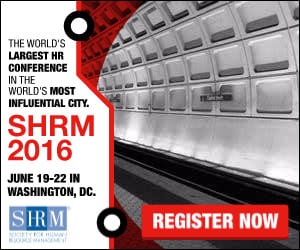Workforce Development Should Be Part of Your Recruiting Strategy
There’s a lot of talk about the challenges of finding qualified applicants. And I realize when the conversation becomes this prevalent, it can be tempting to tune it out. But, I want to talk about something different that can impact your recruiting strategy.
That’s job creation and job readiness. Both are activities that happen at your local workforce development board (also known as a workforce investment board.)
Several years ago I received an invitation to join our local workforce development board. My first thought was “Good grief, what does this have to do with me?” But I accepted the invitation and served on the board for several years. I learned a lot. Let me repeat that…I learned a lot. Here are a few of highlights:
Partnerships are essential. Two key alliances are with economic development and education. Workforce boards work closely with their economic development counterparts to ensure businesses have access to talent. They also work with schools, colleges and universities to make sure certain jobs that are essential to the community have available curriculum.
Workforce board funding is incredibly complex. The money comes from the federal government (via each state). The two major sources are the Workforce Investment Act (WIA) and Temporary Assistance for Needy Families (TANF). When I was on the board, we were keenly interested in everything that pertained to this funding. Interestingly enough, today I hear very little about the importance of these funding streams and the need to make sure workforce boards are fully funded.
Workforce spending is specific. Meaning that most of the time, workforce boards cannot spend funding on whatever they want. Or in some cases what their community needs. See the problem? Each funding stream has very specific rules about how the funds are spent. This is why you might hear in some communities about training dollars being exhausted but other funds being available – just not for training.
The reason I wanted to share with you some of my insights from serving on a local workforce development board is because I heard the same conversation during the Society for Human Resource Management (SHRM) Talent Management Conference. If you’re not aware, SHRM Government Affairs takes time during conferences to conduct listening sessions and I was invited to one focusing on the challenges HR pros are having finding skilled trades workers.
This wasn’t my first listening session. Last year, I had the chance to be a part of a conversation about the Affordable Care Act (ACA). Kelly Hastings, senior government relations advisor at SHRM, explained that the listening sessions help the association craft position statements on behalf of the membership. If you have the opportunity to participate in a future session, I would strongly suggest you do. It’s a chance to give your professional association the point-of-view of your company and industry. And that’s something SHRM wants to hear.
While it wouldn’t be appropriate to talk details about the listening session that took place, let me say that workforce development boards can have a positive impact on your recruiting strategy. Especially when it comes to skilled trades workers. But they need your help. Human resources professionals should partner with them, learn how they operate, and understand their complex systems. In return, organizations can leverage their understanding of the system to tap into the talent they are so desperately are looking for.
P.S. Speaking of workforce development, one of the biggest champions in this area is Mike Rowe, who will be speaking at this year’s SHRM Annual Conference. The mikeroweWORKS Foundation is working to close the skills gap and challenging the notion that a 4-year college degree is the only path to success. I know I’m looking forward to his session. Hope to see you there!
0